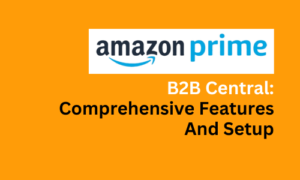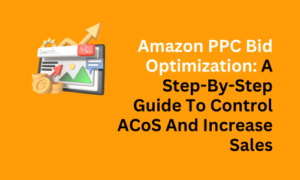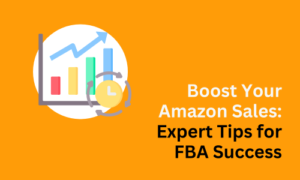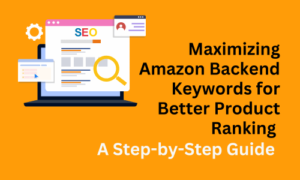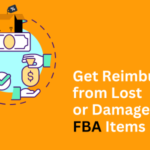Selling on Amazon has become one of the most lucrative ways to build an e-commerce business, but success in the competitive world of Amazon FBA (Fulfillment by Amazon) requires strategic planning, continuous optimization, and an understanding of the platform’s inner workings. Whether you are a beginner just getting started with FBA or an experienced seller looking to scale your business, these 10 essential tips will help you master FBA sales and unlock new levels of growth.
Ready to take your Amazon business to the next level? Let’s dive in!
1. Optimize Your Product Listings
One of the most critical steps to succeeding on Amazon is optimizing your product listings for both visibility and conversion. A well-optimized product listing not only helps you rank higher in Amazon’s search results but also improves the overall customer experience, leading to higher conversion rates and more sales. Let’s break down the key elements involved in optimizing your listing SEO with targeted keywords, including the product title, bullet points, description, featured search terms, and more.
- Optimize Listing SEO with Targeted Keywords: Keywords are the foundation of Amazon’s search algorithm. When customers search for products, Amazon’s system matches their queries with relevant listings based on the keywords you’ve included. To optimize your listing, conduct thorough keyword research using tools like Helium 10, Jungle Scout, or Amazon’s own Search Term Report. Focus on using primary keywords that define the core product and long-tail keywords that target specific customer needs. Incorporate these keywords in the following areas:
- Product Title: Your product title should be concise but packed with the most important keywords, including the brand name, product type, key features, and variations (such as size or color). Aim to include the primary keyword early in the title to increase visibility.
Example: “Waterproof Fitness Tracker with Heart Rate Monitor, Sleep Tracker, Activity Tracker for Men & Women – Black”
- Bullet Points: Use the five bullet points to highlight the key benefits and features of the product. Each bullet should start with a compelling phrase that draws the customer’s attention and includes secondary or long-tail keywords that are important for SEO.
Example Bullet: “Track Your Fitness Progress – Monitor your steps, heart rate, calories burned, and sleep patterns with our all-in-one fitness tracker.”
- Product Description: Here, you have more room to tell a story about your product, address customer pain points, and explain how your product solves those issues. Incorporate keywords naturally while keeping the copy persuasive and informative.
- Featured Search Terms (Backend Keywords): This section is crucial for including keywords that may not fit organically into the title or description. These are backend keywords that don’t appear on your listing but are indexed by Amazon, helping you rank for additional terms.
- Use A+ Content to Enhance Descriptions and Build Trust: For brands registered with Amazon Brand Registry, you can access A+ Content, which allows you to create enhanced product descriptions with rich media. This includes images, comparison charts, and text layouts that go beyond the standard product description.
Engaging Images and Lifestyle Photos: High-quality images play a significant role in customer decision-making. For A+ Content, use engaging images that clearly demonstrate the product’s features, quality, and usage. Include lifestyle images that show the product being used in real-life settings to help customers visualize the product’s utility and premium nature. These images help convey brand quality and build trust with the buyer.
Example: For a fitness tracker, show images of a person using it while running, swimming, or monitoring their heart rate during a workout.
- Infographics and Brand Storytelling: Along with lifestyle images, include infographics that clearly outline the product’s benefits and features. If applicable, use A+ Content to share your brand’s story, building a connection with the customer. A well-told story can differentiate your brand in a crowded marketplace and encourage customer loyalty.
- Test and Refine with A/B Testing: Amazon provides tools for A/B testing (also known as Amazon Experiments) to help you test different elements of your product listings. By running A/B tests on product titles, bullet points, descriptions, and images, you can identify what resonates best with your audience.
Example: Test two different product titles – one focusing on features and the other on benefits – and monitor which version drives more clicks and conversions.
2. Set Competitive Pricing
Pricing your products appropriately is one of the most critical factors in winning sales on Amazon. With thousands of sellers competing on price, it’s essential to find the right balance between profit margins and customer appeal.
Research Competitor Prices: Before setting your price, conduct thorough research into your competitors. Identify sellers offering the same or similar products and analyze their pricing strategies. You want to ensure that your price is competitive enough to attract buyers without cutting into your profit margins.
Example: If you notice that competitors lower their prices during certain seasons, you can plan ahead and adjust your pricing strategy accordingly.
Leverage Price Research Software: For resellers in particular, using price research software can be a game-changer. Tools like Helium 10, Keepa, RepricerExpress, SellerSnap, and Informed.co allow you to automatically adjust your prices in response to market changes. These tools analyze your competitors’ prices in real-time and ensure that you maintain competitive pricing without having to constantly monitor your listings manually.
- Maintain the Buy Box: For resellers, maintaining a competitive price is crucial for winning the Buy Box. The Buy Box (also called the Featured Offer) is the section on an Amazon product page where customers click “Add to Cart” or “Buy Now.” Winning the Buy Box is essential because the majority of Amazon sales come from this section. Without it, customers are less likely to purchase your product, even if you’re listed as a seller. Price research software can help you consistently monitor and adjust your prices to stay within the range required to win the Buy Box.
Example: If a competitor lowers their price to $18.50 and you’re using a repricing tool, your price can automatically adjust to $18.49, helping you regain or maintain the Buy Box.
- Dynamic Pricing: These tools use dynamic pricing algorithms to help you optimize your prices based on various factors, such as competitor prices, market demand, and your target profit margin. This strategy is especially important when multiple sellers are offering the same product, and you need to quickly respond to price changes in order to remain competitive.
A/B Testing: If you’re the only seller for your product or you’ve established a unique brand presence, you can experiment with pricing using A/B testing. This involves testing two different price points to see which drives more sales or generates better profit margins. Amazon’s Manage Your Experiments tool allows you to run A/B tests on various aspects of your listing, including pricing.
Example: Test a $19.99 price against a $21.99 price over a few weeks and analyze which price generates the most sales while keeping your margins healthy
Use Programs Like Subscribe & Save: Amazon offers programs like Subscribe & Save, where customers can sign up for recurring deliveries of your product at a discounted price. This is particularly effective for consumable products, such as groceries, supplements, or household items. Offering your products through Subscribe & Save can help boost sales by encouraging repeat purchases, all while allowing you to offer slight discounts that keep your customers loyal.
Consider Margins for Seasonality and Market Trends: Your pricing strategy may also need to change based on seasonal trends. For example, during the holiday season or specific promotional periods (like Amazon Prime Day), you may want to offer limited-time discounts to capture more customers. In contrast, during off-peak seasons, maintaining a higher price could help you preserve margins while demand is lower.
By using price research software, continuously monitoring competitor prices, and testing different pricing strategies, you can set prices that help you maintain the Buy Box and maximize profitability. Competitive pricing is one of the most important elements of succeeding on Amazon, and the right strategy can make a huge difference in your long-term growth.
3. Monitor Amazon Trends
To stay competitive on Amazon, it’s crucial to keep up with the latest trends in your niche. Trend monitoring allows you to stay ahead of shifts in customer demand, emerging products, and seasonal changes.
Follow Amazon’s Best Sellers List: One way to stay on top of trending products is by regularly checking Amazon’s Best Sellers List. This gives you an overview of what’s popular in your category and can spark ideas for expanding your product line.
- Leverage Amazon Data Software: We recommend using software such as SellerSprite or Helium 10 for our research in order to detect sudden rises in demand of a specific product or category. You can also investigate keywords or search terms that are trending and within the same software check the current competition to see if you have a competitive price advantage and therefore spot an opportunity.
Update Your Keywords: Consumer search behavior can change over time, which means you need to regularly update your keyword strategy. Utilize tools like Google Trends or Amazon’s Search Term Reports in Seller Central to identify new search terms and adjust your listing’s keywords accordingly.
- Seasonal and Holiday Trends: Many product categories experience spikes in demand during certain seasons or holidays. Be prepared by tracking trends for these periods and adjusting inventory levels and marketing strategies.
Staying current with trends ensures your products remain visible and relevant, helping you attract more customers and boost sales.
4. Invest in Advertising (Amazon PPC)
Running Amazon ads through Amazon PPC (Pay-Per-Click) is one of the most effective ways to get immediate visibility for your products. However, successful advertising campaigns require careful planning and ongoing optimization.
Start with Automatic Campaigns: For beginners, starting with automatic PPC campaigns allows Amazon to use its algorithms to match your products with relevant customer searches. This helps you gather data on which search terms convert best.
Move to Manual Targeting: Once you have data from automatic campaigns, switch to manual campaigns to target high-converting keywords. This allows you to control bids more effectively and allocate your ad spend to keywords that generate the highest return on investment (ROI).
Track and Optimize: Monitor your campaigns regularly. Look at metrics like ACoS (Advertising Cost of Sales) to measure profitability and adjust bids accordingly. Increase bids for high-performing keywords and lower or pause ads that aren’t delivering results.
Advertising is a powerful tool that, when managed effectively, can drive traffic to your listings and significantly boost your sales.
Because Amazon PPC is highly complex and requires extensive experience, we highly recommend starting with a low budget and simple campaigns then working your way up once you start to understand how it works. If you want to immediately see results we suggest hiring a seasoned Amazon PPC manager or management company. At Active Seller Hub we offer Amazon PPC management services for new and existing sellers looking to quickly increase sales, grow their brand awareness, or reduce ACoS and increase margins.
5. Build Social Proof Through Reviews
Social proof in the form of reviews and ratings plays a significant role in Amazon’s algorithm and customer purchasing decisions. Having a listing that is high ranking (High BSR) and also has thousands of reviews can become an asset as well! The more positive reviews you have, the higher your chances of converting visitors into buyers.
Amazon Vine Program: If you’re launching a new product, consider enrolling it in Amazon Vine. This program allows trusted reviewers to receive your product for free in exchange for honest reviews. Positive reviews from Vine can kickstart your sales by building trust.
Early Reviewer Program: Another option is Amazon’s Early Reviewer Program, which encourages buyers to leave reviews by offering small rewards. This is particularly helpful for products with fewer than five reviews.
Engage with Your Customers: Building a presence on social media platforms like Instagram, Facebook, or TikTok allows you to engage with customers and encourage them to leave reviews after purchasing.
The more authentic, positive reviews you accumulate, the stronger your social proof becomes, leading to increased customer confidence and higher conversion rates.
6. Protect Your Brand with Amazon Brand Registry
Protecting your brand’s integrity is crucial in the world of Amazon FBA, where counterfeit products can harm your business and reputation. By enrolling in Amazon Brand Registry, you can take control of your product listings and protect yourself from unauthorized sellers.
Register Your Trademark: To qualify for Amazon Brand Registry, you need to have a registered trademark. This not only allows you to control your product listings but also gives you access to advanced tools like Enhanced Brand Content (EBC) and A+ Content.
Report Infringements: With Brand Registry, you can quickly report counterfeit sellers, unauthorized listings, and intellectual property infringements. Amazon takes swift action to remove infringing listings, helping you safeguard your brand.
Create a Strong Brand Presence: Brand Registry also allows you to create Amazon Brand Stores, where you can showcase your full product lineup in a customized storefront. This enhances brand visibility and provides a better shopping experience for your customers.
By registering your brand, you not only protect it from hijackers but also enhance your overall presence on Amazon.
7. Leverage Data Analytics for Decision-Making
Amazon provides a wealth of data to help you make informed decisions about your business. Utilizing Amazon Seller Central’s analytics tools is essential for identifying opportunities, optimizing pricing, and improving overall performance.
Amazon Brand Analytics: This tool gives you insights into your product’s performance, including data on customer search behavior, top-performing keywords, and competitor analysis.
Example: By identifying which search terms customers use to find your products, you can refine your listings to target those keywords more effectively.
- Profitability Dashboard: Keep track of your margins using Amazon’s profitability dashboard, which gives you an overview of your costs, including fees, shipping, and advertising spend. This helps you ensure that your products remain profitable while scaling your business.
Data-driven decisions are key to staying competitive and growing your sales on Amazon as it is the most dynamic marketplace to be a seller. Must sellers make emotional decisions rather analytical and result in large losses.
9. Maintain Good Amazon Account Health
Maintaining your Amazon account health is critical to sustaining your business on the platform. Amazon uses key metrics like Order Defect Rate (ODR), Late Shipment Rate, and Cancellation Rate to monitor seller performance. If these metrics exceed Amazon’s thresholds, you risk account warnings, restrictions, or suspension. Here’s a breakdown of the most common issues sellers face and how to avoid them:
Common Account Health Issues:
Policy Violations: Violating Amazon’s policies—like listing prohibited products, price gouging, or review manipulation—can lead to account suspension. Always stay up-to-date on Amazon’s rules to avoid accidental violations.
Example: Offering free products for positive reviews can result in immediate suspension.
Intellectual Property (IP) Violations: Selling counterfeit goods or infringing on trademarks and copyrights can get your listings removed or account suspended. Always verify the authenticity of your products and avoid using unauthorized brand names in your listings.
Inauthentic Product Claims: If Amazon receives too many reports that your products are inauthentic, you could face a suspension. Keep detailed invoices and proof of product authenticity ready.
Late Shipments and Order Defects: High late shipment rates or frequent order issues increase your ODR, which could lead to account restrictions. FBM sellers, in particular, must ensure on-time deliveries and quality control.
Poor Customer Service: Slow responses to customer messages or frequent A-to-Z Guarantee claims hurt your account health. Amazon expects sellers to address issues quickly and keep buyers happy.
Restricted or Hazardous Goods: Selling restricted or hazardous products without approval can result in instant account suspension.
How to Protect Your Account Health:
- Monitor the Account Health Dashboard: Keep an eye on your metrics and address any violations immediately.
- Respond Quickly to Warnings: Don’t ignore Amazon’s warnings—fix any problems before they escalate.
- Prioritize Customer Service: Answer customer inquiries promptly and resolve issues to prevent negative feedback.
- Stay Compliant with Policies: Regularly review Amazon’s selling policies and avoid restricted items.
- Maintain Documentation: Always have invoices and receipts ready to prove product authenticity if questioned.
By staying vigilant, providing excellent service, and complying with Amazon’s rules, you can protect your account from suspensions and maintain a healthy standing.
10. Seek Expert Help
Mastering Amazon FBA can be overwhelming, with tasks like listing optimization, pricing strategies, PPC management, and maintaining account health. Partnering with experienced consultants can help you execute all of the above nine strategies faster and more efficiently. Experts have the experience, software, and tools to streamline these processes, allowing you to focus on growing your business.
Why Expert Help Matters:
Faster, More Effective Optimization
Consultants are equipped with advanced software and tools to optimize product listings, run A/B tests, and improve visibility with targeted keywords much quicker than you could do alone.Efficient PPC Campaign Management
Experts can set up, monitor, and adjust PPC campaigns, ensuring you achieve the best results at a lower cost, all while avoiding the common pitfalls inexperienced sellers face.Account Health & Compliance
Professionals help you navigate Amazon’s policies, protect your account health, and resolve issues before they escalate into costly suspensions.
By leveraging the expertise of Amazon consultants, you’ll be able to implement all nine strategies more effectively, saving time and avoiding mistakes. At Active Seller Hub, we specialize in helping sellers grow and protect their businesses. Reach out to us today and take your Amazon sales to the next level!



